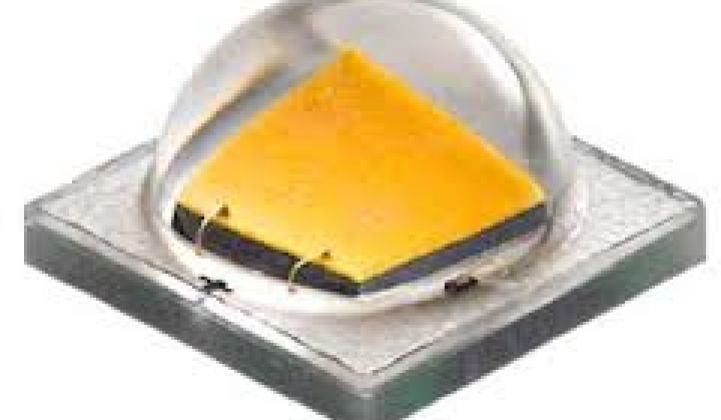Cree (Nasdaq:CREE) of Research Triangle Park, NC just announced a record-setting, next-generation flagship LED.
Cree claims “unprecedented” output for a single-die emitter -- 1198 lumens and 116 lumens per watt at full drive. Luminus Devices can beat the output but not at comparable efficiency. Like its predecessor, the XM-L, this new LED can be driven at up to 3 amps yielding about 10 watts of input power.
The part is based on Cree's third-generation silicon carbide (SiC) platform. A range of warm, medium, and cool whites is available, with color temperatures from 2600K to 6200K.
But when it comes to LED specifications, it pays to always read the fine print.
As is typical with LED product announcements, the 186 lumens per watt is for a premium bin part, in a cool white, at 25 degrees Celsius, and at a reduced current drive, 350 milliamps in this case. Efficiency goes down with economy binning, warmer white, real-world temperatures, and higher drive level -- the last due to the phenomenon known as "droop" (drive the parts lightly and you get extra efficiency).
A low-bin warm white driven at 700 milliamps may yield as little as 79 lumens per watt. There is also a little bit of specsmanship in using the common 350 milliamp drive level for nameplate efficiency with a part this big. That is hardly more than 10 percent of full power, whereas it would be 45 percent of full power for a 700-milliamp part. Catalog binning is done at a more realistic 700 milliamps.
Overall, the new light source does appear to meet Cree’s efficiency claims of 17 percent improvement over the previous generation.
It is significant to see this sort of a step at a late-game stage, where lighting industry observers had expected to see the curve flattened out. Haitz’s law may have at least some legs left.
Decades of improvements in light-emitting diode technology have put the lighting industry on the cusp of flipping general illumination from incandescents to solid state.



